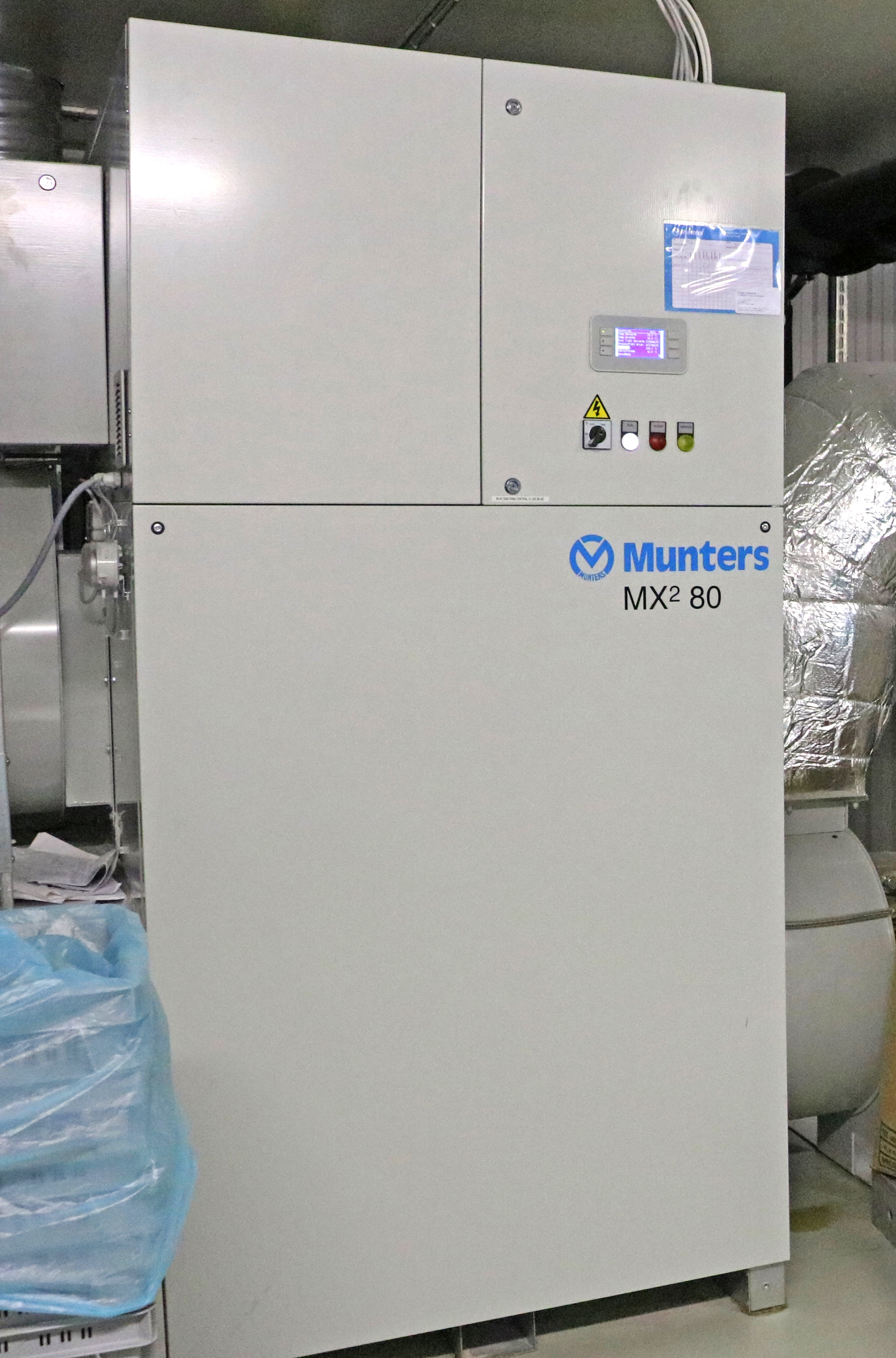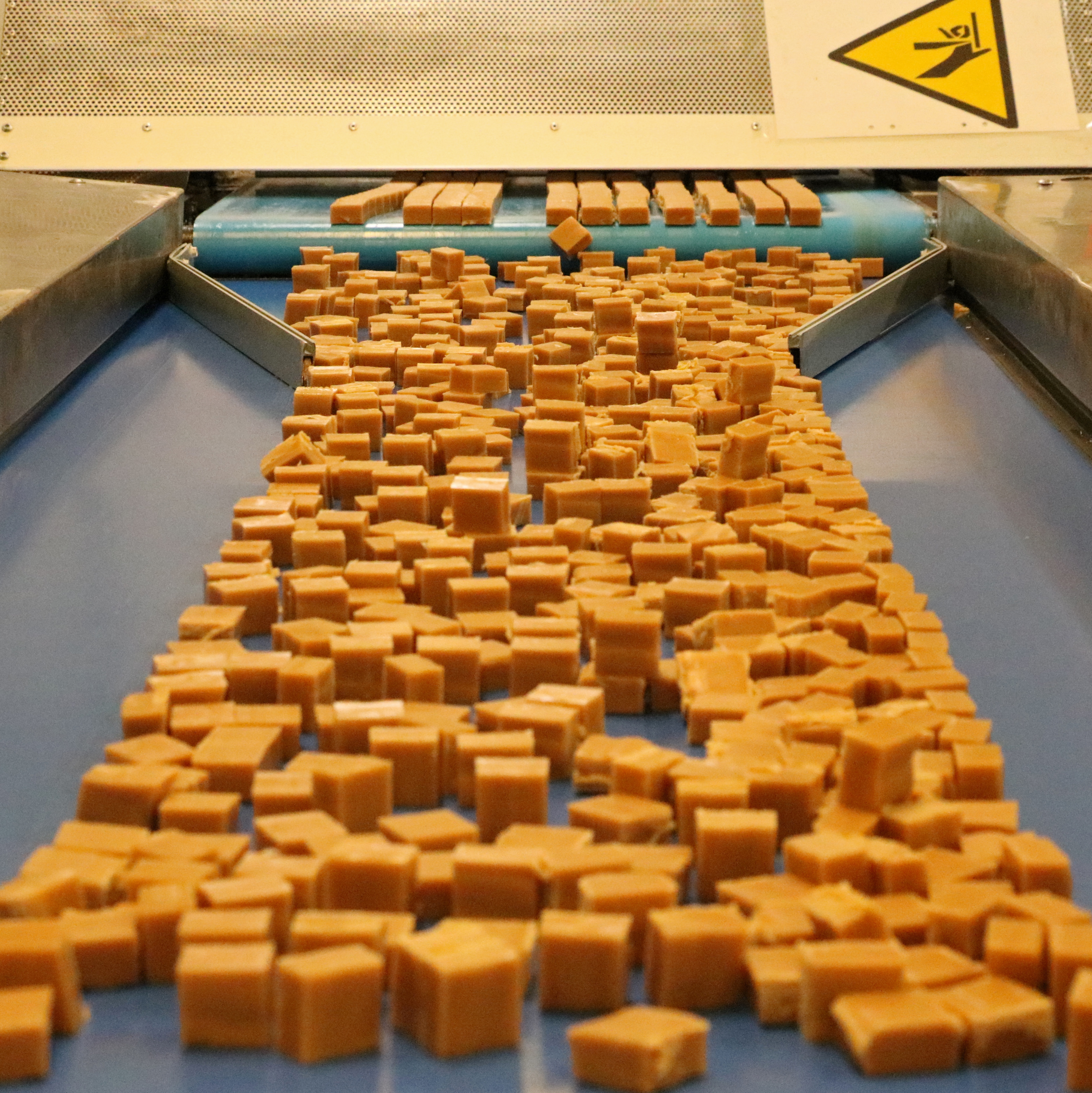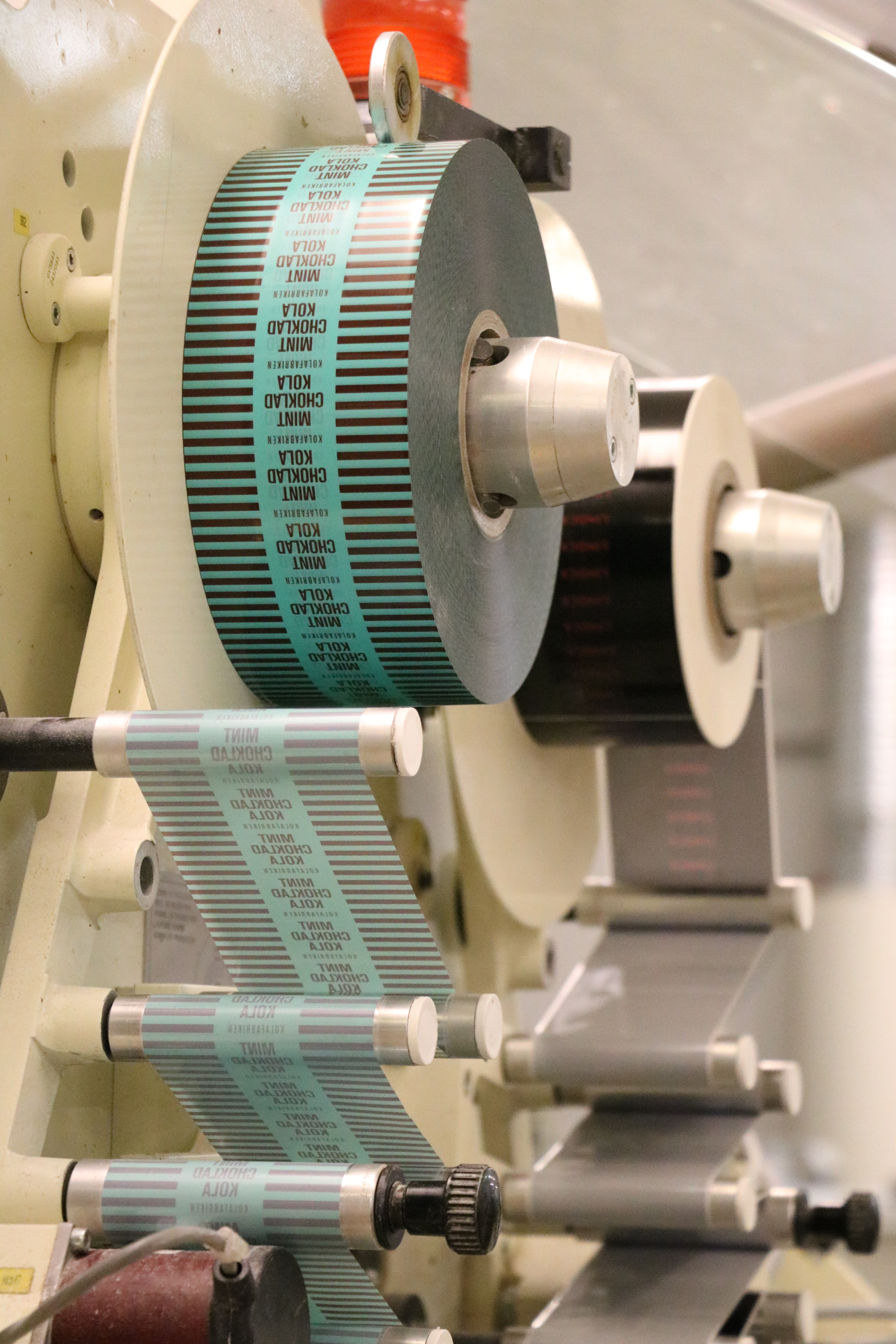Kolafabriken in Bräkne-Hoby, Sweden was founded back in 1993, when the company took over some discarded production machinery from a caramel factory. Kolafabriken developed its own recipes for various toffee products and became the first Swedish industrial manufacturer of fudge products.
Rychlá fakta
- Stable and fully humidity controlled production climate
- Solving packing problems on warm and humid summers days
- Increased production capacity
- Shorter drying time before products can be packed
- Fewer unplanned interruptions in production and packing process
Today, Kolafabriken manufactures a number of fudge and toffee products for wholesalers, the retail trade and private label production. 15 employees produce 1,000 tons of products annually, and the company’s high flexibility ensures the possibility of producing small quantities and speciality products. Many processes are manual, requiring special experience and skills, while processes such as cutting and packaging are fully automated and carried out by modern machinery.
Sensitive to humidity
Back in 2009, Kolafabriken moved to new production facilities where a traditional ventilation system with a very high airflow was already installed. Since production of fudge and toffee products is sensitive to high humidity, it soon became obvious that this ventilation system let excessive amounts of outdoor air - and thus humidity - into the production halls. The air handling unit (AHU) plant was therefore downsized to a smaller air volume, but on warm summers days with high water content in the air, severe problems arose in parts of the production line. Firstly, the cutting of fudge products requires absolutely clean knives. When there is too much moisture in the air, the product starts sticking to the blades. This results in blunt cut edges on the products, compromising the plant’s high quality standards. Secondly, the packing process was a major problem. Normally the products are wrapped and packed either straight away or after a maximum of half a day of drying, but on summer days where humidity often reaches 60% RH, the products could not be packed until after 2 days of drying. This blocked further production and in turn limited the company’s earnings. Dehumidification was the answer Munters investigated the problems and recommended a solution based on a Munters desiccant dehumidifier type MX² 80 and a redesign of the existing duct work. The dehumidifier was installed and connected to the existing AHU system, adding a pre- and post-cooler to condition the supply air. Since Kolafabriken has access to steam as a cheap energy source, the dehumidifier is steam regenerated, reducing the energy costs used for rotor regeneration. Approximately 6,500 m³ of conditioned and dry air is now introduced into the production rooms with a constant humidity of 40% RH around the year. Increased production capacity By reducing the humidity and keeping it stable regardless of the outdoor conditions, Kolafabriken now enjoys a consistent production climate, ensuring that all production processes can run smoothly at any time of the year and without unplanned interruptions. Production capacity has increased, product quality is high and consistent, and the need of cleaning the machinery systems due to sticky products is significantly reduced and can be fully planned. All in all factors that secured a short payback time of the investment, and Kolafabriken can concentrate on developing new, exciting confectionery products.
Rychlá fakta
- Stable and fully humidity controlled production climate
- Solving packing problems on warm and humid summers days
- Increased production capacity
- Shorter drying time before products can be packed
- Fewer unplanned interruptions in production and packing process



